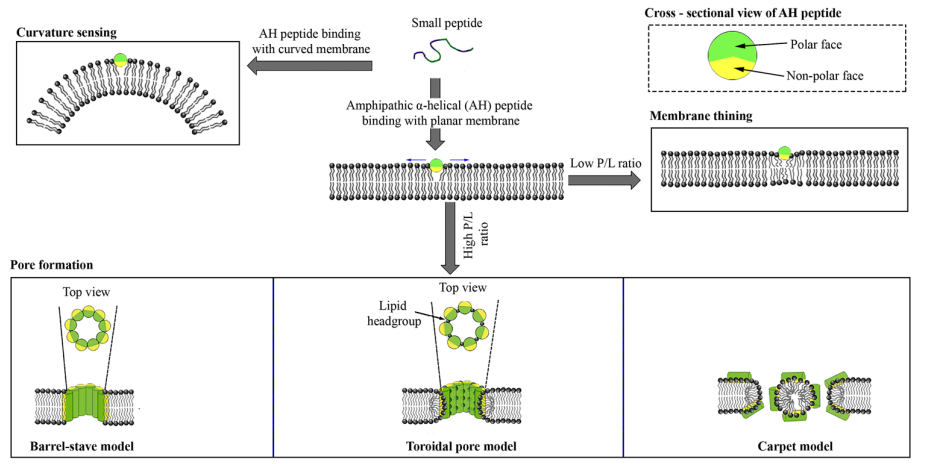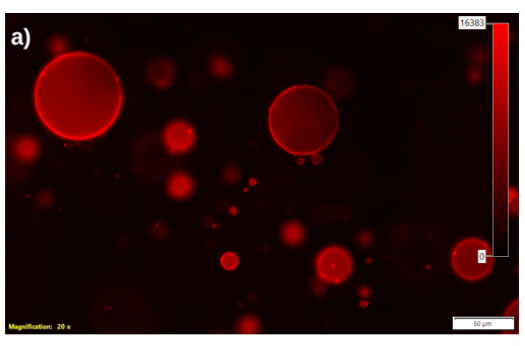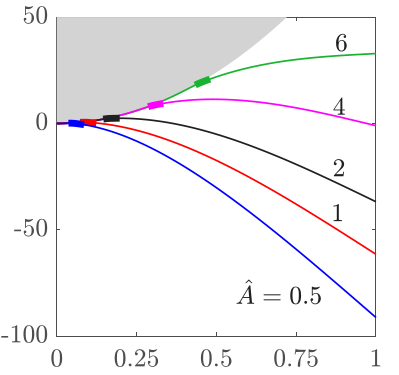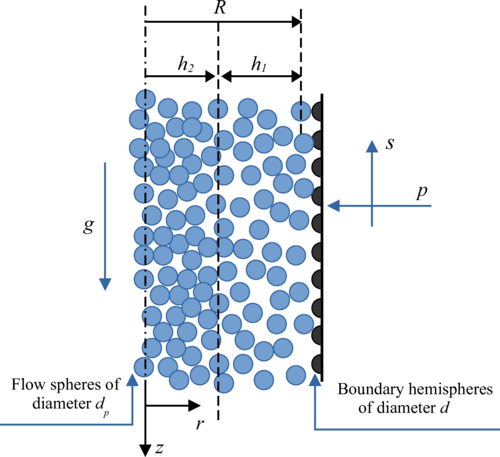-
Biosketch
Education:
Ph. D., Theoretical and Applied Mechanics, Cornell University, 2007.
M. Sc. (Engg.): Mechanical Engineering, IISc, Bangalore, 2002
B. E.: Mechanical Engineering, Jadavpur University, 1999.
Experience:
June 2023 - Present: Professor, Mechanical Engineering, IIT Palakkad
December 2018 - June 2023: Associate Professor, Mechanical Engineering, IIT Palakkad
December 2016 - December 2018: Associate Professor, Department of Mechanical Engineering, IIT Kharagpur
January 2015 - July 2015: Visiting Associate Professor, Department of Applied Mechanics, IIT Delhi
June 2014 - December 2016: Associate Professor, Department of Mechanical Engineering, IIT Kanpur.
November 2009 - June 2014: Assistant Professor, Department of Mechanical Engineering, IIT Kanpur.
October 2008 - October 2009: Senior Research Engineer, Goodyear Tire and Rubber Technology, Akron, OH, USA.
January 2007 - Sepember 2008: Postdoctoral Scholar, Department of Mathematics, Penn State University, USA.
August 1999 - July 2000: Graduate Trainee Engineer, L&T Ltd, India.
-
Research
Research Overview:
Main focus of our group is developing and/or applying continuum theory (mechanics and thermodynamics) based models and perform experiments to elucidate the role of cell membrane and its mechanical properties in various cell-biological processes. The group also carries out research in contact mechanics of thin structures and rapid flow of granular materials. In the following we describe the ongoing studies in this area:
1. Interaction of peptides and other macromolecules with model animal cell membranes
Membranes in a cell are primarily made of lipid bilayer. Understanding the role of lipid bilayer in the functionality of animal cells is key towards the knowhow of fundamental cell biological processes. It is believed that the membrane actively controls its curvature and composition to influence cellular processes such as signaling between proteins, sorting of proteins and lipids, adhesion. One of the key questions in biology is how the complex shapes in organelle such as Golgi network and endoplasmic reticulum are generated and maintained, and how they relate to cell function? Several membrane bound proteins are known to actively participate in generating, regulating and sensing membrane curvature. We have developed mechanics-thermodynamics based models for such curvature sorting of proteins in a biophysical system consisting of a cylindrical membrane tube connected to a giant lipid bilayer vesicle.

The various ways the macromolecule influences the lipid bilayer of a
membrane (ref: Has and Das, JMB, 256, 343, 2023)In recent years, we have started investigating the interaction of a class of macromolecules, synthesized in labratory (of a collaborator), with the lipid bilayer membrane of cell membrane mimicking giant unilamellar vesicles (GUV). A macromolecule is a large molecule formed by polymerization of smaller subunits called monomers. In Sequence-defined macromolecule (SDMs), the sequence of these monomers is precisely controlled. Proteins, peptides, and nucleic acids are some of the examples for natural SDMs. Antimicrobial peptides (AMPs) are small amphiphilic peptides composed of a few (10 -40) hydrophobic and cationic amino acids. Positively charged polar residues, in addition to a significant number of hydrophobic residues, are often found in AMPs. It has been shown that positive charge and amphipathicity are necessary for the antimicrobial action of many AMPs. Biological membranes are the essential structural features in all kingdoms of life on the earth. They compartmentalize the distinct intracellular organelles (such as Golgi apparatus, endoplasmic reticulum (ER), and nucleus) and also define the cells outer boundary (plasma membrane (PM)). The membranes are built by phospholipid bilayers and are highly dynamic and can adopt a variety of intricate and beautiful shapes, the majority of which are thought to have developed for a specific cellular function.

Giant Unilamellar Vesicles (GUVs)
prepared in our lab.In order to better understand the mechanisms of interactions of SDMs with cell membranes, giant unilamellar vesicles (GUVs) are chosen as the model membrane system. GUVs are closed sacs of typically a few tens of micron in diameter and are composed of a single lipid bilayer. GUVs, being simpler, lack several features such as, cell walls and lipopolysaccharides observed in certain bacterial cell membranes. These model membrane systems are used not for direct comparison with cell membranes; however, they are visible under an optical microscope, and can elucidate the role of the lipid bilayer in variety of biological processes involving peptides, proteins and other macromolecules.
In collaboration with Mintu Porel group at IIT Palakkad, a library of synthetic macromolecules have been synthesized and best candidates for antimicrobial activity are being identified. These macromolecules have the significant anitmicrobial activity as well as selectivity and have potential to replace the natural peptide based antimicrobial drug. However, their interaction with membrane has not been systematically investigated. A systematic and trhough investigation of the intercations of macromolecules and membranes is the main focus.
2. Contact mechanics of thin structures:

Adhesive contact of beam with a
cylindrical indenter (ref: Krishnan et al.,
IJSS, 279, 112348, 2023;
IJSS, 254, 111905, 2022)Mechanical properties of a membrane play key role in processes such as adhesion and motion of microdomains in lipid bilayer. An important question in mechanics is how adhesion influences the physical behavior of thin structures like vesicles and cells. Our main aim her is the modeling of adhesion of soft structures (not just limited to biological membrane) that can deform and rotate by large amounts.
Adhesion of thin structures like beams is significant in applications like Micro-electro-mechanical systems (MEMS) devices, in modeling behavior of natural biological adhesives, and in designing bio-inspired structures such as adhesive pads that imitate a gecko’s feet. Because of the slenderness of the structure and the relative softness of the material involved in such applications, the beam may undergo large deformation and/or rotation. One way to understand the behavior of adhesive beams is to investigate their response when indented by a rigid punch. Indentation of non-adhesive beams have been investigated extensively over the years. In contrast, there are fewer studies on the indentation of adhesive elastic beams. The available studies employ linear theories for elastic beams. However, most applications, such as those mentioned above, involve beams undergoing large deformation. Recently, we investigated the indentation of adhesive non-adhesive geometrically exact (GE) beams. Ongoing work in this topic includes the extension to contact/adhesion of geometrically exact shells. Our study will find use in many other areas such as contact of polymers, thin optical fibers, design of novel adhesives.
3. Flow of grains through channels and pipes
A granular material is a collection of solid particles or grains, having particle sizes larger than a few micrometres. The terms “granular materials,” “bulk solids,” “particulate solids,” and “powders” are often used interchangeably. Common examples of granular materials are sand, gravel, food grains, seeds, sugar, coal, and cement. The flow of granular materials such as sand, snow, and coal is a common occurrence in nature and industries. In nature, they occur as avalanches of granular snow, rock debris slides, and in planetary rings. And in industries, they occur in the pharmaceutical, mining and polymer processing areas. Also, in energy production industries we can see the flow of granular media in fluidized beds.Granular materials are commonly encountered in nature and in various industries. For example, with reference to the chemical industry note that about 40% of the value added is linked to particle technology. Further, more than 50% of all products sold are either granular in form or involve granular materials in their production. Granular media is second only to water as the most handled material in the global industry. However, unlike standard fluids or elastic solids, these materials lack a well-understood theoretical foundation. Despite the importance of granular materials, their mechanics are not well understood at present.

Granular flow through a pipe/channel (ref. Islam et al.,
JFM,950, A13, 2022; Islam et al., PRF Lett 8, L072301, 2023)A material is called a dry granular material if the fluid in the interstices or voids between the grains is a gas, which is usually air. On the other hand, if the voids are completely filled with a liquid such as water, the material is called a saturated granular material. If there is a liquid in some of the voids, and the rest of the voids are filled with a gas, the material is said to be partially saturated. For example, the upper region of soil in its natural environment is usually partially saturated, whereas the lower region is saturated. In the recent literature, both saturated and partially saturated materials are called wet granular materials.
Our aim is to apply the kinetic theory developed for rapid granular flows, extended to include the velocity correlations along with more realistic features such as soft and frictional particles in order to use the constitutive equations obtained from it for studying the flow behaviour of granular particles through various geometries. One of the simplest examples of granular flow is the flow of particles through a planar vertical channel with parallel bumpy walls and axisymmetric vertical pipe. These geometries are analogous and form the basis for the ones used in different industrial applications such as the transportation of granular materials through vertical pipes in handling and processing bulk powders. It is also important to study not only dry granular flows but also the effects of interstitial fluids, which can provide a better understanding of fluidization and some natural phenomena like avalanche flows.
-
Teaching
ME3070, Design of Machine Elements, IIT Palakkad, 2023
ID1110, Computer Programming (tutor), 2023, 2024
ME1020, Engineering Thermodynamics, IIT Palakkad, 2022
ME5615, Solid Mechanics, IIT Palakkad, 2020, 2022
ME3060, Machine Design Practice, IIT Palakkad, 2020
ME5011, Mathematics for Engineers, IIT Palakkad, 2019, 2020, 2021
ME1130, Engineering Drawing, IIT Palakkad, 2019, 2022
CE1020, Engineering Mechanics, IIT Palakkad, 2019, 2021, 2023, 2024
ME10001, Mechanics, IIT Kharagpur, 2017, 2018
ME352, Theory of Mechanisms and Machines, IIT Kanpur 2016.
ESO209, Dynamics, IIT Kanpur 2016.
ME622, Introduction to Continuum Mechanics, IIT Kanpur, 2016.
ME721, Theory of Plasticity, IIT Kanpur, 2015.
ME 724, Mechanics of Biological Membranes, IIT Kanpur, 2011 & 2014.
ME30602, Design of Machine Elements, IIT Kharagpur, 2017, 2018
ME351, Design of Machine Elements, IIT Kanpur, 2014, 2016
ME 781, Approximate Methods in Engineering Mathematics, IIT Kanpur, 2013.
ME471, Mechanical Engineering Lab (Solid Mechanics), IIT Kanpur, 2013.
BSE 314, Biomechanics, IIT Kanpur, 2012 & 2013.
ME 622, Theory of Elasticity, IIT Kanpur, 2011.
ME 621, Introduction to Solid Mechanics, IIT Kanpur, 2010.
ME 652, Principles of Dynamics, IIT Kanpur, 2010.
MATH 220, Linear Algebra, Penn State University, 2007 & 2008.
MATH 140, Calculus, Penn State University, 2007.
MATH 191, Calculus, Cornell University, 2006.
-
Research Group
Opening(s):
We are looking for motivated scholars to join and carry forward our group's research. Interested scholars may contact me. Scholars with available funding through JRF/SRF/CSIR or other fellowships are also encouraged to join us. MSc students looking for internships/project in the area of membrane biophysics are also encouraged to contact us.
Current Students:
Mudassir Ul Islam (Ph. D. Candidate at IIT Palakkad)
Sivadas P (Ph. D. Candidate at IIT Palakkad)
Ananta Kumar Nayak (Ph. D. Candidate at CNRS, Grenoble, France) - Supervisor Prof. Chaouqi Misbah
Former Members:
Krishnan S (PhD, IIT Kanpur, 2022): Joined IIT Gandhinagar as a postdoctoral scholar.
Chandra Has (PhD, IIT Bombay): Assistant Professor, GSFC University.
Suhail Rizvi (Ph. D., 2016, IIT Kanpur): Assistant Professor, IIT Hyderabad.
Anish Kumar (Ph. D., 2017, IIT Kanpur): Assistant Professor, IIST Tiruvananthapuram.
Paritosh Mahata (Ph. D., 2016, IIT Kanpur): Assistant Professor, Birla Institute of Technology, Mesra.
Laxminarsimha Rao (Ph. D., 2016, IIT Kanpur): Assistant Professor, GITAM Deemed University, Hyderabad.
Subhradeep Roy (M. Tech., 2012, IIT Kanpur): Assistant Professor in Mechanical Engineering, California State University, Northridge, USA.
Pranav Vyas (M. Tech, 2017, IIT Kanpur): Joined PhD Program in Bioengineering, Stanford University.
Pankaj Singh (M. Tech, 2012, IIT Kanpur): Founding member of Start-up company OrthoFit after finishing PhD from Cornell University in 2017.
Aishwarya M Kasarla (MS by Research, 2022, IIT Palakkad): Joined PhD Program in Aerospace Engineering, IIT Bombay.
Hemant Singh (M. Tech, 2017, IIT Kanpur): Ogden Consultancy, Gurugram.
Harshit Gangwar (M. Tech, 2016, IIT Kanpur): Launched a start-up company.
Soumyadipta Das (M. Tech., 2013, IIT Kanpur): Working in Maruti Suzuki Ltd, Gurugram.
Debapriya Pinaki Mohanty (M. Tech., 2012, IIT Kanpur): Joined PhD program in the School of Aeronautics and Astronautics, Purdue University.
Tanmay Mandal (M. Tech., 2012, IIT Kanpur): Working in Tata Motors, Jamshedpur.
Vishal Sharma (M. Tech., 2011, IIT Kanpur): Working in Mercedes Benz, Bangalore.
-
Additional Information
TitleSponsored ProjectsDescription
Estimation of the thermal contact conductance of realistic spacecraft bolted joints (with Samarjeet Chanda), ISRO, 2021-2023
Study of the interaction between synthetic sequence-defined macromolecules and lipid membrane towards developing antibacterial and anticancer drug (with Mintu Porel), MHRD, STARS Scheme, 2020-2023.
Contact mechanics of soft and thin adhesive structures, DST, 2018-2021 (PI: I Sharma, IIT Kanpur)
Membrane curvature sensing and generation by proteins in lipid bilayer membrane, DBT, 2015-2018, (Co-PI: P. B. Sunil Kumar, IIT Madras and S. Matheshwaran, IIT Kanpur)
Motion and Interactions of Domains in Fluid Lipid Membranes, SERB, DST, 2012-2015
TitleRecent Conferences and WorkshopsDescription1. Co-Chair, Session on Surfactants and Membranes in CompFlu2019, December 5-7, 2019, IISER, Bhopal, India.
2. Co-Organizer, Pravartana-Symposium on Applied Mechanics, March 31-April 01, 2019, IIT Kanpur, India.
-
Publications
Anna Jose, NC Shabin, P Sivadas, Debashis Barik, Karthika Kannan, Sovan Lal Das, Sushabhan Sadhukhan and Mintu PorelACS Applied Biomaterials In press (2025)Ananta Kumar Nayak, Marco Canepari, Sovan Lal Das and Chaouqi MisbahJournal of the Royal Society Interface 21 (221) 20240458 (2024)Ananta Kumar Nayak , Sovan Lal Das, and Chaouqi MisbahScientific Reports 14 13550 (2024)Kishor, E., Ajul, E., Samarjeet Chanda and Sovan Lal DasHeat and Mass Transfer (2023)Chandra Has and Sovan Lal DasJournal of Membrane Biology 256 343 (2023)Krishnan Suryanarayanan , Thiruvelu Bhuvana, Ishan Sharma and Sovan Lal DasInternational Journal of Solids and Structures 279 112348 (2023)Mudasir Ul Islam, James T. Jenkins and Sovan Lal DasPhysical Review Fluids Letters 8 L072301 (2023)Ananta Kumar Nayak, Zhe Gou, Sovan Lal Das, Abdul I. Barakat and Chaouqi MisbahBiomechanics and Modeling in Mechanobiology 22 217 (2023)Mudasir Ul Islam, J. T. Jenkins and S. L. DasJournal of Fluid Mechanics 950 A13 (2022)Islam_Jenkins_DasJFM_950_A13_2022.pdf (2.27 MB)Krishnan Suryanarayanan, Ishan Sharma and Sovan Lal DasInternational Journal of Solids and Structures 254-255 111905 (2022)Chandra Has, P Sivadas and Sovan Lal DasThe Journal of Membrane Biology (2022)Anish Kumar, Sovan Lal Das, Pankaj Wahi and Krzysztof Kamil ŻurJournal of Sound and Vibration 527 116872 (2022)Pranav Vyas, PB Sunil Kumar and Sovan Lal DasSoft Matter 18 1653 (2022)Chandra Has and Sovan Lal DasBiochimica et Biophysica Acta (BBA) - General Subjects 1865 (10) 129971 (2021)Sachin Krishnan, T. V., Das, S. L. and Sunil Kumar, P. BPramana - Journal of Physics 94:47 1-7 (2020)Sachin Krishnan, T. V., Das, S. L. and Sunil Kumar, P. BSoft Matter DOI: 10.1039/C8SM02623H (2019)Mohanty, D. P., Laxminarsimha Rao V., Das, S. L., and Ghatak, A.Journal of Adhesion Science and Technology 31 1647 (2017)Laxminarsimha Rao V., Roy S., and Das, S. L.Physica B 505 74 (2017)Kumar, A., Das, S. L., and Wahi, P.International Journal of Mechanical Sciences 122 37 (2017)Mahata, P. and Das, S. LFEBS Letters 591 1333 (2017)Rizvi, Md., S., Pal A., and Das, S. L.Biomechanics and Modeling in Mechanobiology 15 1641 (2016)Božič, B, Das S. L., and Svetina, S.Soft Matter 11 2479 (2015)Laxminarsimha Rao V. and Das, S. L.Journal of Fluid Mechanics 779 468 (2015)Kumar, A. Das, S. L., and Wahi, P.International Journal of Mechanical Sciences 104 174 (2015)Mahata, P. and Das, S. LPhysical Review E 90 062713 (2014)Das, S. L., Mandal, T., and Gupta, S. S.International Journal of Solids and Structures 50 2792 (2013)Rizvi, Md., S. and Das, S. L.Journal of Theoretical Biology 315 139 (2012)Singh, P., Mahata, P., Baumgart, T., and Das, S. L.Physical Review E 85 051906 (2012)
INDIAN INSTITUTE OF TECHNOLOGY PALAKKAD
Kanjikode | Palakkad | Kerala - 678623
Kanjikode | Palakkad | Kerala - 678623
0491 209 2001 (Office) |
info@iitpkd.ac.in
Copyright ©2023 Indian Institute of Technology Palakkad. All Rights Reserved.


